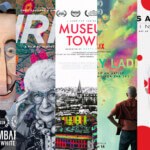A brainstorming session that’s as free-flowing as creativity itself can be an empowering and productive experience.
It’s rarely the case.
Adding a structure to your brainstorming sessions can take your creative collaborations to a different level.
Brainstorming always benefits from collaboration and teamwork. At the crucial beginning stage of a project, it’s important to engage and interact with others’ ideas and perspectives. And often, the blend of unique outlooks and particular knowledge that comes with brainstorming collaboratively leads to unexpected solutions.
These group brainstorming session ideas and techniques will take you and your collaborators out of your own well-worn grooves and habits to bring out truly creative thinking.

Bad Ideas First
This one is pretty straightforward – start your brainstorming session by first inviting collaborators to get their worst ideas out on the table, no matter how silly or impractical they may seem. Not only will this get the ball rolling, but you might be surprised by where some of these offbeat thoughts – as part of the creative process – can take you.
Too often, teammates hesitate to share their more original ideas because they don’t believe they measure up to some arbitrary standard or goalpost. Inviting these contributions at the outset creates a safe space for uninhibited exploration and novel thinking. It also builds a cohesive and shared view of limitations – what won’t make sense.
Ultimately, giving “bad ideas” attention, thought, and consideration can lead to unexpected and highly creative places.
Inspiration tends to be found in the unlikeliest of places. And with this method, you’ve explored many (very far-out) avenues.
Once you’ve got these “really bad ideas” out of the way, other brainstorming techniques become more potent and productive. Or maybe somewhere in those really bad ideas, you’ve discovered the next greatest thing since sliced bread (and the power of creative collaboration).
Rapid Ideation
Rapid ideation is a brainstorming idea that promotes quantity over quality – at least to start.
With a clear idea of the objective and desired outcomes, you aim to come up with as many ideas as possible in a designated amount of time, without a filter or critical analysis. The ideas should be collected somewhere as they come up, be it on a whiteboard, post-its, spreadsheet, or within a virtual collaboration space.
This method is a great way of getting a sense of the breadth of options for approaching a solution. The goal is to get you thinking loosely and to override the urge to prejudge or dismiss fringe ideas before they see the light of day. Ideas are constructive and missing a critical piece can keep the money idea from being born. Once the range of potential options for action have been put out for consideration, participants can move on to the work of assessing them in terms of their quality or viability.
This brainstorming technique becomes especially interesting when you are working as a collective to pool all of your creative ideas. Certain ones will come up more often than others – and this is where you’ll have to think about whether an obvious idea necessarily makes a good one.
Brainsketching and Brainwriting
Brainsketching is a collaborative sketching exercise that’s especially popular in UX design. In a brainsketching session each participant sketches out a prototype or concept separately on their individual sheets of paper. Then, everyone moves on to another person’s idea, eventually rotating through until each person has contributed to every sketch.
Another version of this method is brainwriting – the same process, but rather than using imagery and sketching to communicate, the collaborators write out their ideas.
Both these methods are quick and reliable ways to invoke collaborative creativity, while at the same time dissolving individual ownership of an idea – something that can be unproductive in collaboration, where creators risk becoming too attached to an idea (call it the Ikea Effect).
For more on Brainsketching check out the (legendary) Jay Vidyarthi’s post on the UXPA’s website.
Beach Ball Conversation
A beach ball conversation is both an information-gathering activity, and a solution-generating exercise.
Like any good meeting – the first step is to invite the right people. These are people who have a stake in or relevant experience pertaining to the competing realities of the matter at hand. Once you know who will be invited to the conversation, you provide an in-depth outline of the issue (the brainstorming brief) that you are hoping to address, ensuring their active participation.
In the brainstorming session meeting, after recapping the situation, each person shares their perspective – no one takes notes, just listening. Then you have them all write out a concise answer to the question “what would you do if you were me?” When the contributors share their potential solutions with the group, you do not respond – just thank them. The session finishes with the host summarizing the themes that have come up through the discussion, and gathering the suggested solutions from the group.
Why the “beach ball”? Because the perspective, knowledge and expertise that each person brings can be visualized as a “stripe” on a ball. You can’t move forward with a solution to your problem until you have that 360° panorama of the situation in front of you – with all the stripes accounted for.
SWOT Analysis
So you’ve got a few good potential ideas and have reached the phase where it’s time to really flesh them out or further narrow things down. You need to be fully aware of all the potential outcomes of each possibility, including the risks.
One reliable strategic planning technique for this critical stage of ideation is the SWOT analysis.
A SWOT analysis provides a framework for assessing an idea or solution’s viability in terms of four key areas: Strengths, Weaknesses, Opportunities, and Threats.
To be effective in painting a full picture of all potential outcomes, stakeholders from as many different areas and vantage points as possible should be involved in preparing the SWOT analysis (or analyses). And of course, with every project you decide to realize, a new SWOT analysis should be conducted every so often as the conditions you’re operating within evolve and change over time.
It Boils Down to Giving Good Feedback and Being Collaborative
All these brainstorming session ideas require participants to give quality creative feedback. Giving good feedback requires a team focused on being better collaborators. These techniques force constructive rather than critical engagement on a shared objective, with participants building on one another’s ideas rather than invalidating them.
As it becomes more and more clear that some degree of workforce decentralization is here to stay, certain collaborative processes will take some adjusting – and this one is a prime example. This was traditionally an in-person exercise. Thankfully, there are plenty of tools that make visual-first collaboration not just possible, but enjoyable.
And if you are getting really stuck, here are a few ideas that will help you feed your creativity.







